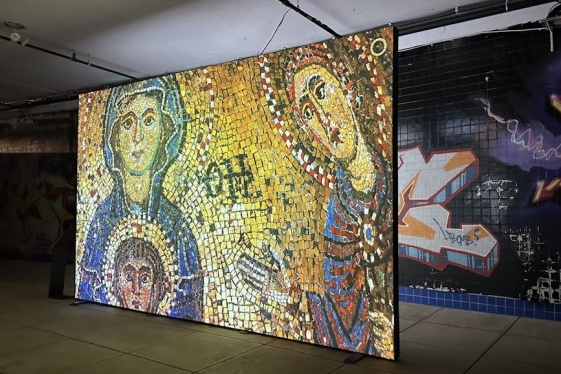

BY: Alexander Morrison
For centuries, the Italian painter Cimabue has been overshadowed by his more famous pupil Giotto, who is widely credited with ushering in the Renaissance. But a restoration project undertaken by the Musée du Louvre in Paris on Cimabue’s La Maestà (around 1280) is challenging these long-held assumptions, revealing how many critical innovations were already apparent in the work of the older painter.
La Maestà, more than four metres high, depicts an enthroned Madonna and Child surrounded by angels, with apostles, saints and other figures represented in the original frame. It was first mentioned by the artist and chronicler Giorgio Vasari in his Lives of the Artists, and arrived at the Louvre in 1813, having been looted from Italy by Napoleon’s troops.
SOURCE: https://www.theartnewspaper.com
You may be interested
-
'Venus of the Rags' rises from ashes in Naple...
An open-air installation of "Venus of the Rags," one of the most famous works by Italian c...
-
‘Beyond the Medici’: A Window Into Florentine...
The exhibition “Beyond the Medici: The Haukohl Family Collection” is currently on view at...
-
‘Dust is everywhere’: rare glimpse of how Mic...
Michelangelo’s David is recognised as one of the most sublime works in the history of scul...
-
‘Joseph Stella: Visionary Nature’ Awakens The...
A vibrant array of fauna and flora dance around a gnarled tree trunk as we navigate a para...
-
‘Lost’ Botticelli masterpiece worth $109 mill...
A painting by the 15th-century master Sandro Botticelli, recorded as missing since the 198...
-
‘Mosaico’ Italian art exhibit featured at Dup...
“Mosaico Italian code of a timeless art” is the Dupont Underground’s latest exhibit, in co...
-
"Monumental necropolis" of 200 ancient tombs...
Italian archaeologists recently uncovered a "monumental necropolis" that appeared to honor...
-
“A Profound Loss:” Painter Constance LaPalomb...
The first thing you notice is the light. The pears are mere suggestions of themselves, wit...










